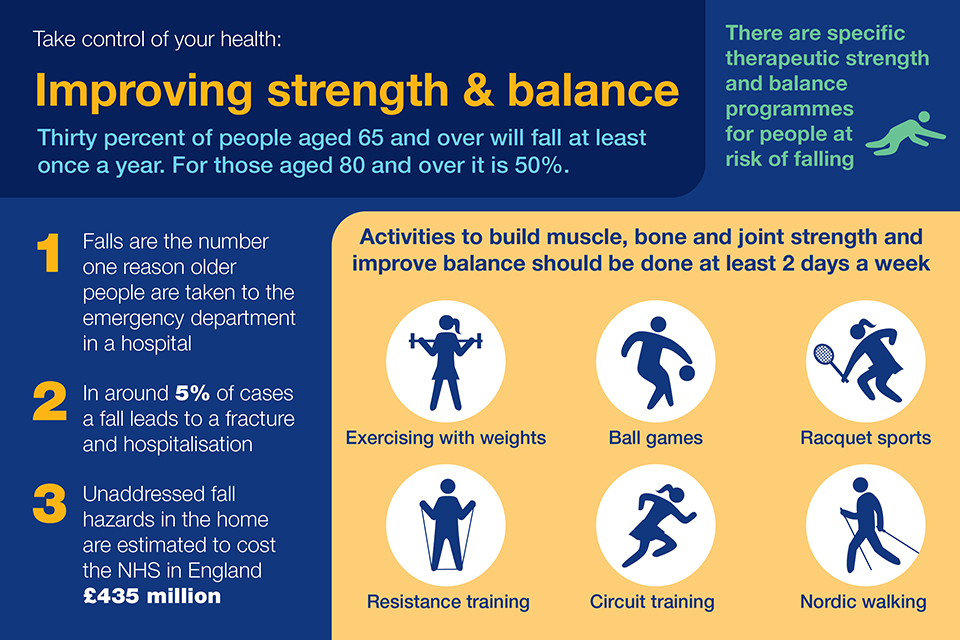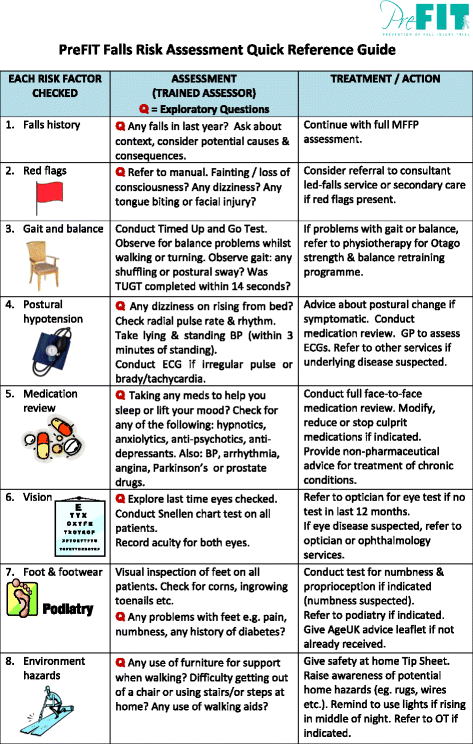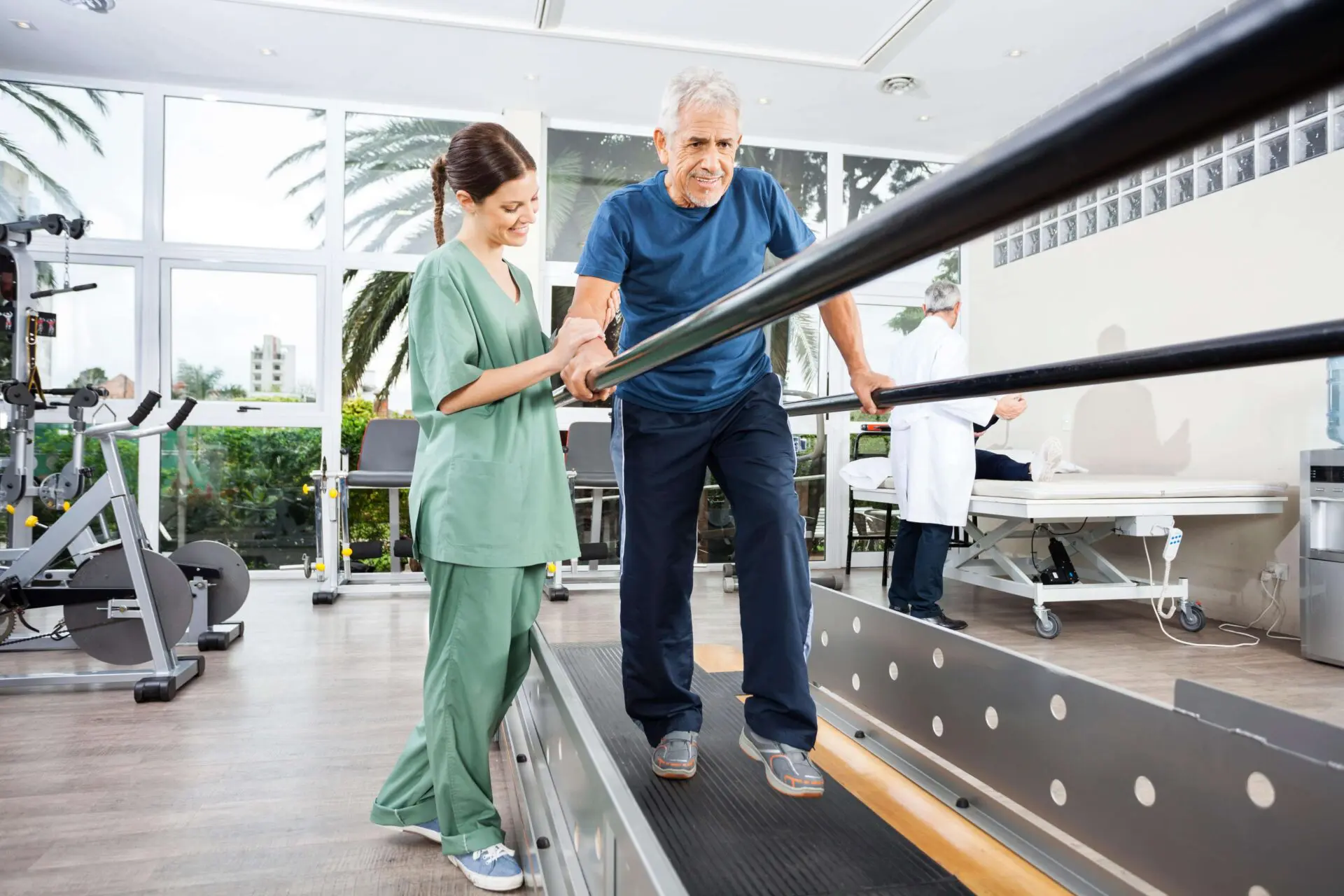9 Simple Techniques For Dementia Fall Risk
9 Simple Techniques For Dementia Fall Risk
Blog Article
9 Simple Techniques For Dementia Fall Risk
Table of Contents8 Simple Techniques For Dementia Fall RiskThe Only Guide to Dementia Fall RiskThe Best Strategy To Use For Dementia Fall RiskExcitement About Dementia Fall Risk
A loss threat analysis checks to see exactly how most likely it is that you will fall. It is mainly done for older grownups. The evaluation typically consists of: This consists of a collection of inquiries concerning your total health and if you have actually had previous drops or troubles with balance, standing, and/or walking. These devices test your strength, equilibrium, and stride (the method you stroll).STEADI consists of testing, analyzing, and treatment. Interventions are recommendations that may reduce your danger of dropping. STEADI includes 3 steps: you for your danger of dropping for your threat aspects that can be boosted to try to avoid drops (as an example, balance problems, damaged vision) to reduce your risk of dropping by using efficient techniques (for example, providing education and learning and resources), you may be asked a number of concerns including: Have you fallen in the past year? Do you really feel unsteady when standing or strolling? Are you stressed over falling?, your copyright will evaluate your strength, balance, and stride, making use of the complying with fall assessment devices: This test checks your gait.
If it takes you 12 seconds or more, it may suggest you are at higher danger for a loss. This examination checks toughness and equilibrium.
The settings will get harder as you go. Stand with your feet side-by-side. Relocate one foot midway forward, so the instep is touching the huge toe of your other foot. Move one foot completely before the various other, so the toes are touching the heel of your other foot.
How Dementia Fall Risk can Save You Time, Stress, and Money.
A lot of falls take place as a result of numerous adding factors; as a result, handling the risk of dropping starts with determining the aspects that add to drop danger - Dementia Fall Risk. A few of the most pertinent risk aspects include: Background of previous fallsChronic clinical conditionsAcute illnessImpaired gait and equilibrium, reduced extremity weaknessCognitive impairmentChanges in visionCertain risky medications and polypharmacyEnvironmental variables can also boost the risk for drops, consisting of: Insufficient lightingUneven or harmed flooringWet or slippery floorsMissing or damaged handrails and get barsDamaged or improperly fitted devices, such as beds, wheelchairs, or walkersImproper use assistive devicesInadequate supervision of individuals living in the NF, including those that show aggressive behaviorsA successful autumn risk administration program calls for a complete scientific analysis, with input from all members of the interdisciplinary team

The care strategy ought to additionally include treatments that are system-based, such as those that promote a secure environment (ideal lights, hand rails, get hold of bars, etc). The effectiveness of the treatments should be reviewed occasionally, and the treatment plan modified as required to mirror modifications in the loss danger evaluation. Carrying out a loss danger monitoring system utilizing evidence-based best method can reduce the prevalence of drops in the NF, while restricting the capacity for fall-related injuries.
The smart Trick of Dementia Fall Risk That Nobody is Talking About
The AGS/BGS standard suggests evaluating all adults aged 65 years and older for autumn danger annually. This screening consists of asking people whether they have fallen 2 or even more times in the previous year or looked for medical attention for a fall, or, if they have not fallen, whether they really feel unsteady when strolling.
Individuals that have actually dropped as soon as without injury ought to have their equilibrium and stride evaluated; those with stride or equilibrium abnormalities need to obtain extra evaluation. A background of 1 loss without injury and without stride or equilibrium troubles does not necessitate further analysis a fantastic read past continued annual fall danger testing. Dementia Fall Risk. A fall threat evaluation is required as component of the Welcome to Medicare exam

The Ultimate Guide To Dementia Fall Risk
Recording a falls background is one of the top quality indications for fall avoidance and management. copyright medicines in particular are independent forecasters go to my site of drops.
Postural hypotension can commonly be relieved by decreasing the dose of blood pressurelowering drugs and/or stopping drugs that have orthostatic hypotension as an adverse effects. Use of above-the-knee support hose pipe and sleeping with the head of the bed boosted may additionally decrease postural decreases in blood stress. The suggested elements of a fall-focused physical exam are revealed in Box 1.

A yank time higher than or equivalent to 12 secs recommends high fall threat. The 30-Second Chair Stand test look at here now examines lower extremity toughness and balance. Being unable to stand from a chair of knee elevation without using one's arms suggests increased autumn threat. The 4-Stage Balance examination evaluates static balance by having the patient stand in 4 settings, each considerably a lot more difficult.
Report this page